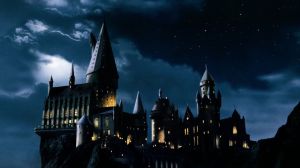Comics artist Rich Buckler died on May 19, 2017 and his passing has called his legacy as an artist to attention and it’s a well-deserved re-appraisal.
Videos by ComicBook.com
While it might be unfortunate that it takes someone’s death to call greater attention to their work, there remains no better time than the present to pay more attention.
Buckler was a titan of his era who worked on almost every significant character at both Marvel and DC Comics. We think it’s time to take a look back at how great his impact on superhero comics really was.
While you might not hear Buckler’s name tossed around alongside those of Jim Steranko or George Perez, his contributions were every bit as great. Perez was, in fact, his assistant at one point and the connection between the pair’s work is clear. They both adored illustrating a wide variety of characters and stuffing pages with as much content as they could bare. These were artists who adored the medium and added to its pantheon in a wide-ranging fashion.
So whether you’re already familiar with Buckler’s work or looking to catch up in the wake of his tragic passing, here are five recommendations that any fan of superhero comics ought to enjoy…

Deathlok the Demolisher
Issues: Astonishing Tales # 25-28
Written by Rich Buckler and Doug Moench
Pencils by Rich Buckler
Inks by Rich Buckler, Klaus Janson, Al Milgrom, and Mike Esposito
Colors by Glynis Wein
Deathlok is bound to go down as Rick Buckler’s greatest contribution at Marvel Comics. The character was touted as a flagship in the original “Marvel Phase Two” and his earliest incarnation holds up after about 3 decades. Buckler plotted and drew all of Deathlok’s earliest appearances, crafting a post-apocalyptic soldier in stories that thrilled whether or not they were connected to the Marvel Universe. The earliest Deathlok stories also featured Buckler teaming up with other all-time superhero greats like Klaus Janson and Al Milgrom. They are innovative, violent, and incredibly enjoyable comics still today. The manner in which Buckler breaks down a page into increasingly small segments and details of action is well worth studying. Whether you know Deathlok from Agents of S.H.I.E.L.D. or are looking to study some of the best Marvel comics of the 1970s, Bucker’s Deathlok issues are a must-read.

Origin of the All-Star Squadron
Issues: Justice League of America # 193
Written by Roy Thomas
Pencils by Rich Buckler
The co-creation of the All-Star Squadron by Rick Buckler and Roy Thomas in a Justice League backup story is a perfect counterpoint to Buckler’s invention of Deathlok. These optimistic heroes crafted to evoke the Golden Age of comics are everything Deathlok is not. Their costumes are clean, adventures fun, and tales short. While they present a much more all-ages appeal, it’s no surprise the All-Star Squadron would go on to the pages of its own series. It’s an incredibly endearing group filled with the joy and heroism that have held DC Comics aloft for almost a century, and Buckler’s design capture exactly what have made their heroes work for so long.

The Death of Jean DeWolff
Issues: Peter Parker, The Spectacular Spider-man # 107-110
Written by Peter David
Pencils by Rich Buckler
Inks by Kyle Baker, Brett Breeding, Pat Redding, and Josef Rubinstein
Colors by George Roussos, Bob Sharen, and Nelson Yomtov
“The Death of Jean DeWolff” is an absolutely fascinating study of art in superhero comics. It is certainly a creation of its penciller Rich Buckler; it includes terrifying urban cityscapes, grimy men with guns, and lots of helicopters. At the same time Buckler’s style is not as apparent due to the influence of very different inkers. You can set it side-by-side with his work on Marvel comics like Deathlok or Fantastic Four and quickly perceive what an impact an inker makes. Setting that aside, this urban crime story is one of the darkest in Spider-Man’s history and Buckler’s eye for horror and crime genre elements makes it sing. If you can find a copy of these issues, they are well worth reading.

The Fantastic Four
Issues: Fantastic Four # 142-144
Written by Gerry Conway
Pencils by Rich Buckler
Inks by Joe Sinnott
Colors by George Roussos
Rich Buckler described the two years he spent drawing Fantastic Four as a dream come true. That’s no surprise considering Buckler was a key artist in the second phase of Marvel Comics artists, and that Jack Kirby was the single most important artist in the company’s history. Buckler’s work on Fantastic Four both highlighted his love for “The King” and showed off what he was most capable of with a variety of emotional highs and lows. During his stint with Marvel’s “First Family”, Buckler tackled many of their greatest villains and allies, including Doctor Doom and the Inhumans. His work with inker Joe Sinnott remains an artistic highlight of the series to today, one that is only topped by other Marvel greats like John Byrne and Kirby, himself.

The Apocalypse Child
Issues: The New Gods # 15
Written by Gerry Conway
Pencils by Rich Buckler
Inks by Bob McLeod
Colors by Liz Berube
There is no greater hurdle for artists at DC Comics to tackle than that of the New Gods. They are defined by their creator Jack Kirby as the creation that most encompass what his style and influence were all about. Rick Buckler’s work on a single issue of The New Gods showed both a deep understanding of Kirby’s work and Buckler’s own ability to extrapolate from the artists he respected. There’s a bombastic tone to The New Gods #15 that is difficult to describe, with hands and faces reaching forth from the panels. It’s a love letter to one of Buckler’s greatest influences and a reminder of what Buckler could do on his own. As a great piece of fiction or artistic study, this is a must-read for anyone interested in what Buckler could accomplish in 20 pages of comics.
There’s no doubt that Buckler will be missed, but you only need to look as far as these recommendations to see how his eyes will continue to influence superhero comics for years to come.









